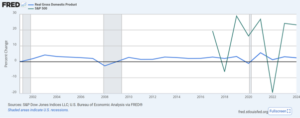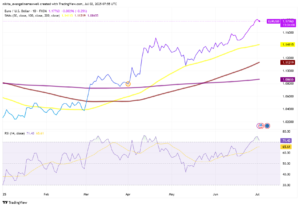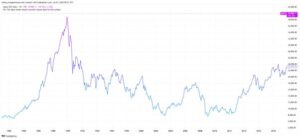Recently, the gold market has faced selling pressure. Earlier this month, gold found support above $2,600, but the price couldn’t hold its ground near the historic high of $2,800, prompting questions about whether this is the long-anticipated correction or yet another opportunity to buy the dip.
Economic Data and Gold’s Outlook
Stronger-than-expected economic data this week may place short-term pressure on gold. The upcoming October non-farm payroll report is a key focus, as recent private sector employment data showed robust growth. Although the ADP report’s correlation with government data can vary, there is potential for October’s job numbers to exceed expectations.
“These data releases could shift sentiment in the gold market. Strong job numbers may reduce the likelihood of further aggressive rate cuts from the Fed, potentially triggering U.S. Treasury sell-offs, rising yields, and increased demand for the dollar.” Currently, the 10-year U.S. Treasury yield has risen above 4%, marking a three-month high.
Technical Indicators Suggest Possible Pullback
On a technical level, gold’s momentum indicators have entered overbought territory. The weekly Relative Strength Index (RSI) broke above 80, a threshold reached only six times in the past 15 years, often signaling an upcoming pullback. Historically, such conditions have led to a minimum correction of 5%, with other instances seeing declines of 8% to 20%.
Signs of a pullback typically emerge as prices retreat from overbought levels. Until then, counter-trend trading remains challenging, and price fluctuations could become more pronounced due to short covering.
Bullish Factors for Gold Remain Strong
Despite increased risks, the gold market may not yet be ready for a major correction. Since mid-February, gold has risen 40%, climbing from $1,990 to $2,790. However, current levels are not fully in overbought territory, suggesting that gold may still have room for further gains before reaching a “make-or-break” moment.
Some analysts believe that a significant correction is unlikely unless gold breaches the psychological level of $3,000. Reaching this threshold would roughly align with inflation-adjusted historical highs, potentially affecting market sentiment more deeply.
While short-term price volatility may occur, many market participants see any dips as buying opportunities. With the Fed poised to enter a new easing cycle, the fundamental outlook for a gold bull market remains solid. Additionally, ongoing geopolitical uncertainties provide continued support for gold prices.





